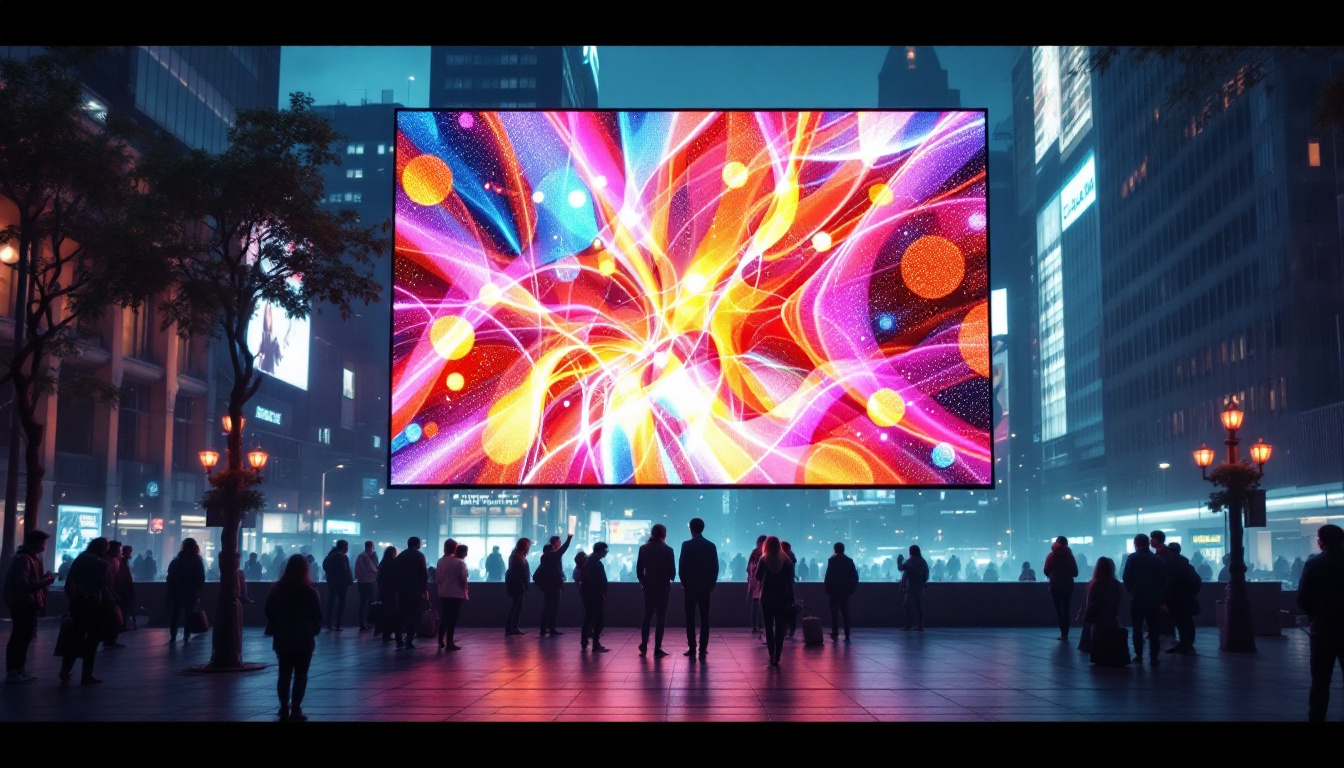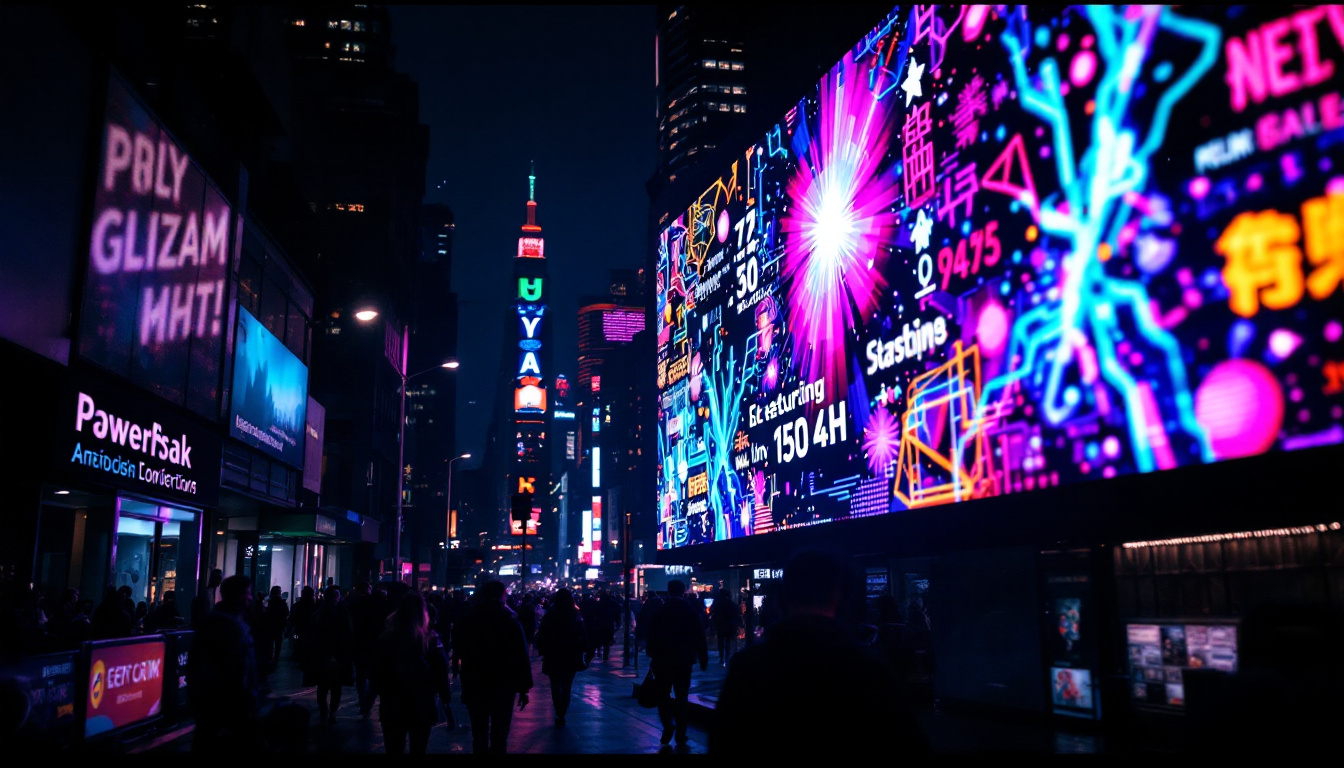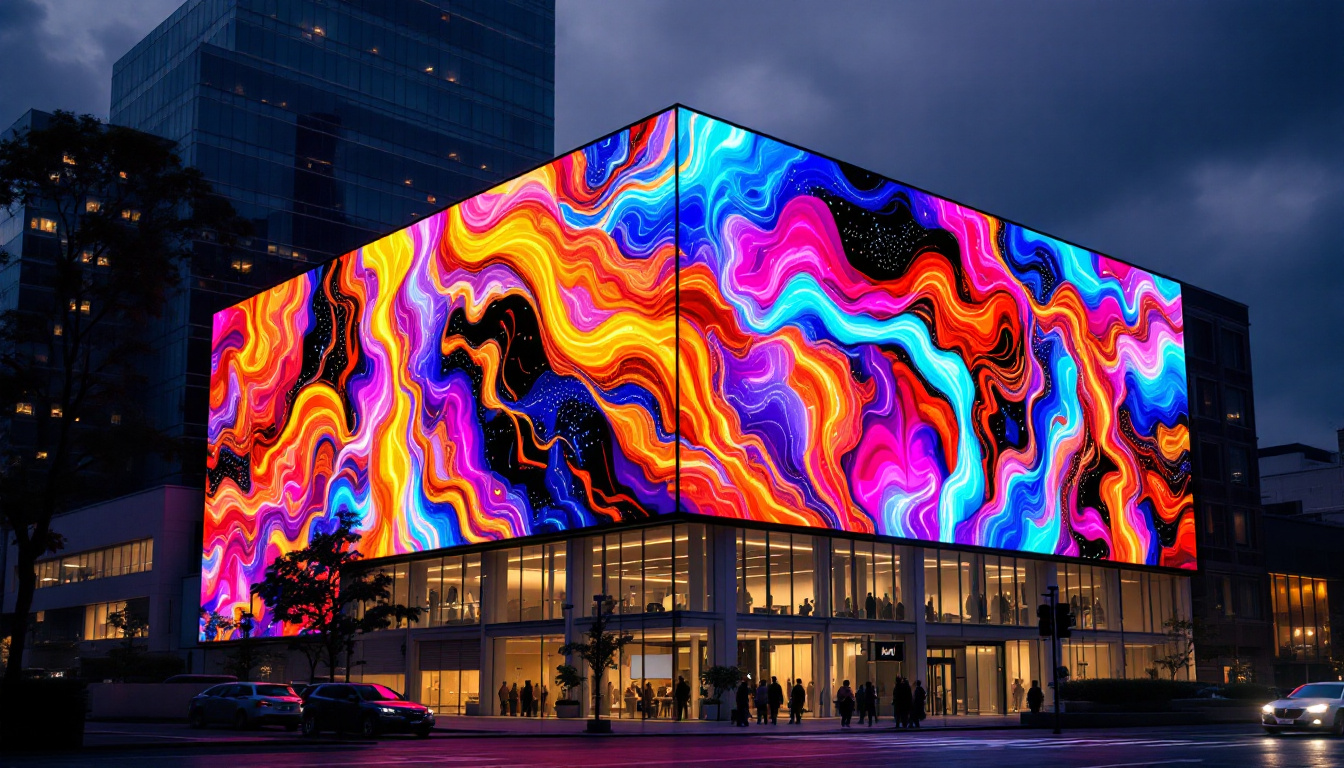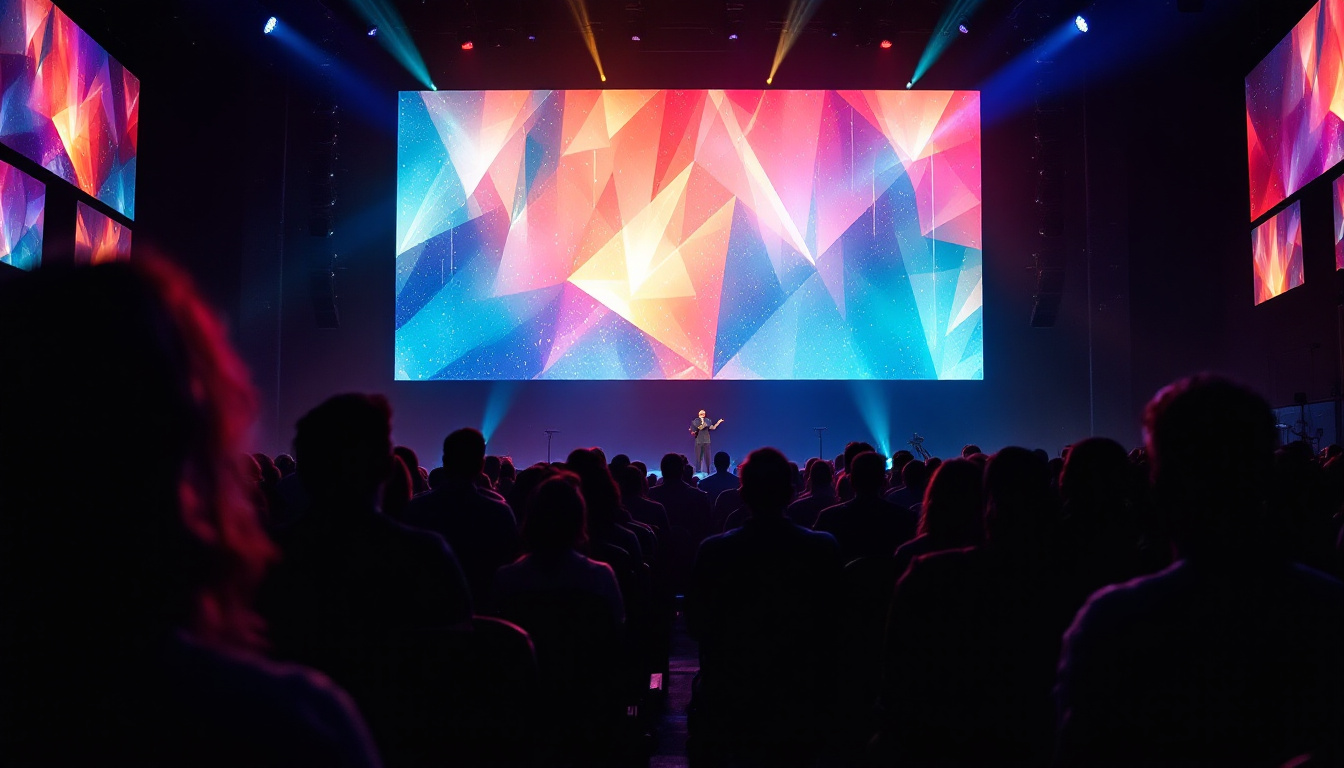Digital Signage Vs TV: LED Display Explained
In the modern age of technology, visual communication has evolved significantly. One of the most notable advancements is the use of LED displays, which are now commonplace in various settings. Two primary applications of LED technology are digital signage and traditional television. While they may seem similar at first glance, their purposes, functionalities, and advantages differ greatly. This article explores the distinctions between digital signage and television, focusing on LED displays and their applications.
Understanding LED Technology
LED, or Light Emitting Diode, technology has revolutionized how visuals are presented. Unlike traditional display technologies, LED displays utilize a series of small diodes that emit light when an electric current passes through them. This results in brighter, more vibrant images that can be viewed in various lighting conditions. The compact nature of these diodes allows for a sleek design, making LED displays not only functional but also aesthetically pleasing in various settings, from homes to public spaces.
How LED Displays Work
LED displays consist of numerous pixels made up of red, green, and blue diodes. By adjusting the intensity of each color, a wide range of colors can be produced. This pixel-based structure allows for high-resolution images and videos, making LED displays ideal for both digital signage and television. The precision in color mixing is particularly beneficial in applications such as gaming and virtual reality, where immersive experiences are paramount.
The technology behind LED displays also allows for flexibility in size and shape. They can be manufactured in various dimensions, from small screens to large billboards, catering to different needs and environments. This versatility is one of the key reasons why LED technology has become the go-to choice for many applications. Furthermore, advancements in flexible LED technology have enabled the creation of curved and even transparent displays, opening up new possibilities for innovative design in architecture and advertising.
Advantages of LED Displays
LED displays offer several advantages over traditional display technologies. Firstly, they are energy-efficient, consuming less power while delivering brighter images. Secondly, their longevity is noteworthy; LED displays can last for tens of thousands of hours, reducing the need for frequent replacements. This durability not only contributes to lower maintenance costs but also aligns with eco-friendly initiatives, as fewer displays mean less electronic waste.
Moreover, LED technology provides superior image quality, with higher contrast ratios and better color accuracy. This makes them particularly effective for advertising and promotional content, where capturing attention is crucial. Additionally, LED displays have a rapid response time, which is essential for displaying dynamic content, such as live sports or fast-paced video games. The ability to refresh images quickly ensures that viewers experience smooth transitions and vibrant visuals, enhancing overall engagement and viewer satisfaction.
Digital Signage: A Closer Look
Digital signage refers to electronic displays used to convey information, advertisements, or other content to an audience. These displays are often found in public spaces, retail environments, transportation hubs, and corporate settings. The primary goal of digital signage is to communicate messages effectively and engage viewers.
Applications of Digital Signage
The applications of digital signage are vast and varied. In retail, for instance, digital signage can be used to showcase promotions, highlight new products, or provide information about store hours. In transportation hubs, such as airports and train stations, digital displays provide real-time updates on schedules and delays.
Additionally, digital signage plays a significant role in corporate environments. Companies utilize digital displays for internal communications, such as sharing news, updates, and performance metrics with employees. This not only keeps staff informed but also fosters a sense of community within the organization. Furthermore, digital signage can be employed in educational institutions, where it serves to inform students about events, deadlines, and campus news. By integrating digital displays in classrooms and common areas, schools can enhance the learning experience and keep students engaged with relevant information.
Content Management for Digital Signage
One of the defining features of digital signage is its ability to update content remotely and in real-time. This is made possible through content management systems (CMS) that allow users to create, schedule, and distribute content across multiple displays from a centralized location. This flexibility is particularly beneficial for businesses that need to adapt their messaging quickly based on changing circumstances.
Moreover, digital signage can incorporate interactive elements, such as touch screens and QR codes, enhancing viewer engagement. This interactivity allows businesses to create immersive experiences that can lead to increased customer satisfaction and sales. For example, restaurants can utilize digital menus with interactive features that allow customers to customize their orders, while museums can implement touch screens that provide in-depth information about exhibits. The ability to gather data from these interactions also enables businesses to analyze customer behavior and preferences, further refining their marketing strategies and improving overall service delivery.
Television: A Traditional Medium
Television has long been a staple in households and public spaces. While it shares some similarities with digital signage, its primary purpose is to entertain and inform through broadcast content. television programming includes news, movies, shows, and advertisements, delivered via cable, satellite, or streaming services.
Television Content Delivery
Television content is typically delivered through a scheduled programming format. Viewers tune in at specific times to watch their favorite shows or news segments. This traditional model contrasts sharply with the on-demand nature of digital signage, where content can be updated at any moment to reflect current events or promotions.
Moreover, while television can display advertisements, the format is generally less flexible than digital signage. Advertisers must often adhere to strict time slots and programming schedules, limiting their ability to respond to real-time market changes.
Limitations of Television in Commercial Use
In commercial settings, the limitations of television become apparent. While it can serve as a tool for brand awareness, its passive nature does not encourage interaction. Viewers are often less engaged with television advertisements, leading to lower conversion rates compared to digital signage.
Furthermore, the cost of television advertising can be prohibitive for many businesses. High production costs, coupled with expensive airtime, make it challenging for smaller companies to compete effectively. In contrast, digital signage offers a more cost-effective solution with greater flexibility in content management.
Comparing Digital Signage and Television
When evaluating digital signage and television, several key differences emerge. Understanding these distinctions can help businesses determine which option is best suited for their needs.
Purpose and Functionality
The primary purpose of digital signage is to communicate specific messages to targeted audiences, often in real-time. In contrast, television serves a broader entertainment and informational role, with content designed for mass consumption. This fundamental difference shapes how each medium is utilized in various environments.
Digital signage is highly adaptable, allowing businesses to tailor their messages based on audience demographics, time of day, and current events. Television, however, operates on a fixed schedule, limiting its ability to respond to immediate changes in the market.
Engagement and Interactivity
Engagement is another critical area where digital signage excels. With the ability to incorporate interactive features, such as touch screens and QR codes, digital signage encourages viewer participation. This interactivity can lead to higher retention rates and increased customer interaction.
Television, on the other hand, is largely a passive medium. Viewers consume content without the opportunity for interaction, which can result in lower engagement levels. While some television programs may encourage audience participation through social media or voting, this is not inherent to the medium itself.
Cost Considerations
Cost is an important factor for businesses when choosing between digital signage and television. While the initial investment for digital signage can be significant, the long-term savings are often greater. Digital signage allows for easy content updates, reducing the need for costly production and airtime expenses associated with television advertising.
Additionally, the ability to target specific audiences with digital signage can lead to higher conversion rates, making it a more cost-effective solution for many businesses. In contrast, television advertising can be prohibitively expensive, particularly for smaller companies with limited budgets.
The Future of Visual Communication
As technology continues to advance, the landscape of visual communication is evolving rapidly. Digital signage is becoming increasingly sophisticated, with innovations such as artificial intelligence and data analytics enhancing its capabilities.
Emerging Trends in Digital Signage
One of the most exciting trends in digital signage is the integration of AI-driven content management systems. These systems can analyze viewer behavior and preferences, allowing businesses to deliver personalized content that resonates with their target audience. This level of customization can significantly improve engagement and conversion rates.
Furthermore, the rise of augmented reality (AR) and virtual reality (VR) is opening new avenues for digital signage. These technologies can create immersive experiences that captivate viewers and encourage interaction, further blurring the lines between digital signage and traditional advertising.
The Role of Data Analytics
Data analytics is also playing a crucial role in the future of digital signage. Businesses can track viewer engagement, monitor content performance, and adjust strategies based on real-time data. This analytical approach enables companies to make informed decisions that enhance their marketing efforts and drive sales.
As the demand for personalized and interactive experiences grows, digital signage is well-positioned to meet these expectations. Its adaptability and responsiveness make it an essential tool for businesses looking to thrive in a competitive market.
Conclusion: Making the Right Choice
In summary, both digital signage and television have their unique strengths and applications. Digital signage excels in delivering targeted messages, engaging viewers through interactivity, and providing cost-effective solutions for businesses. Television, while still a valuable medium, is more suited for broad entertainment and informational purposes.
Ultimately, the choice between digital signage and television will depend on a business’s specific goals, audience, and budget. By understanding the distinctions between these two mediums, companies can make informed decisions that enhance their visual communication strategies and drive success in an ever-evolving landscape.
Discover LumenMatrix’s Innovative LED Solutions
Ready to elevate your visual communication strategy with the latest in LED display technology? LumenMatrix is at the forefront of creating immersive and dynamic visual experiences. From Indoor and Outdoor LED Wall Displays to specialized solutions like Vehicle and Sports LED Displays, our extensive range caters to every need. Embrace the future with our Custom, All-in-One, and Transparent LED Displays, designed to captivate your audience and amplify your message. Check out LumenMatrix LED Display Solutions today and transform the way you connect with your viewers.































